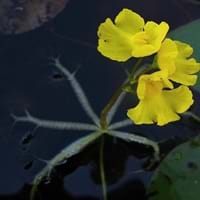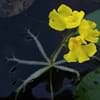Life Span
Annual and Perennial
Perennial
Type
Aquatics
Flowering Plants, Fruits, Trees
Origin
World/Pandemic
Central Asia
Types
Utricularia graminifolia, Utricularia vulgaris, Utricularia gibba
Aceymac apple, Bailey Sweet apple, Dabinett apple, Nehou apple
Habitat
Lakes, stream banks
Hillside
USDA Hardiness Zone
Not Available
5-8
AHS Heat Zone
Not Available
9-1
Sunset Zone
21,22
A1, A2, A3, 8, 9, 10, 11, 12, 13, 14, 15, 16, 17, 18, 19, 20, 21, 22, 23, 24
Habit
Spreading
Oval or Rounded
Flower Color
Yellow, Purple, Lavender
White
Flower Color Modifier
Not Available
Not Available
Fruit Color
Non Fruiting Plant
Green, Red
Leaf Color in Spring
Not Available
Dark Green
Leaf Color in Summer
Not Available
Green
Leaf Color in Fall
Not Available
Brown, Green, Light Yellow
Leaf Color in Winter
Not Available
Not Available
Leaf Shape
Orbicular
Oblong
Plant Season
Spring, Summer, Fall
Spring
Sunlight
Full Sun
Full Sun, Partial shade
Growth Rate
Medium
Medium
Type of Soil
Not Available
Loamy
The pH of Soil
Acidic, Neutral
Neutral
Soil Drainage
Not Available
Well drained
Bloom Time
Not Available
Fall, Summer
Tolerances
Wet Site
Drought
Where to Plant?
In Water
Ground
How to Plant?
Divison, Seedlings
Grafting, Seedlings, Transplanting
Plant Maintenance
Medium
Medium
Watering Requirements
Requires 4 to 8 inches of water above the soil line
Medium
In Summer
Lots of watering
Lots of watering
In Spring
Moderate
Moderate
In Winter
Average Water
Average Water
Soil pH
Acidic, Neutral
Neutral
Soil Type
Not Available
Loamy
Soil Drainage Capacity
Not Available
Well drained
Sun Exposure
Full Sun
Full Sun, Partial shade
Pruning
Cut away fading foliage, Remove damaged leaves, Remove dead branches, Remove dead leaves
Prune when plant is dormant, Remove dead or diseased plant parts
Fertilizers
All-Purpose Liquid Fertilizer
All-Purpose Liquid Fertilizer
Pests and Diseases
hair algae
Aphids, Canker, Caterpillars, Powdery mildew, Root rot
Plant Tolerance
Wet Site
Drought
Flower Petal Number
Not Available
Single
Foliage Texture
Fine
Medium
Foliage Sheen
Matte
Matte
Allergy
Avoid during Pregnancy
Mouth itching, Throat itching
Aesthetic Uses
Showy Purposes, Water gardening
Not Used For Aesthetic Purpose
Beauty Benefits
Not Available
Not Available
Environmental Uses
Air purification
Air purification
Medicinal Uses
Diuretic, Vulnerary
Cancer, constipation, Diabetes, Diarrhea, Dysentry, Fever, Heart problems, Tooth ache
Part of Plant Used
Leaves, Root
Fruits
Other Uses
Food for animals, Showy Purposes
Used As Food, Wood is used for making furniture
Used As Indoor Plant
Insignificant
No
Used As Outdoor Plant
Yes
Yes
Garden Design
Bog Garden, Container, Water Gardens, Wildflower
Fruit / Fruit Tree, Shade Trees, Showy Tree
Botanical Name
UTRICULARIA
Malus domestica
Common Name
Bladderwort
Apple Tree
In Hindi
Bladderwort plant
सेब का वृक्ष
In German
bladderwort Pflanze
Apfelbaum
In French
plante Bladderwort
Pommier
In Spanish
planta bladderwort
Manzano
In Greek
φυτό υδρόβιο φυτό
μηλιά
In Portuguese
planta bladderwort
Macieira
In Polish
Bladderwort roślin
jabłoń
In Latin
bladderwort herba
Arbore
Phylum
Magnoliophyta
Magnoliophyta
Class
Magnoliopsida
Magnoliopsida
Order
Scrophulariales
Rosales
Family
Lentibulariaceae
Rosaceae
Clade
Angiosperms, Asterids, Eudicots
Angiosperms, Eudicots, Rosids
Tribe
Not Available
Not Available
Subfamily
Pitcairnioideae
Not Available
Number of Species
Not Available
Properties of Bladderwort and Apple Tree
Wondering what are the properties of Bladderwort and Apple Tree? We provide you with everything About Bladderwort and Apple Tree. Bladderwort doesn't have thorns and Apple Tree doesn't have thorns. Also Bladderwort does not have fragrant flowers. Bladderwort has allergic reactions like Avoid during Pregnancy and Apple Tree has allergic reactions like Avoid during Pregnancy. Compare all the properties and characteristics of these two plants. Find out which of these plant can be used as indoor plant. If you are interested to decorate your house and garden, find out aesthetic uses, compare them and select the plant which will beautify your surrounding. Along with beautification, try comparing medicinal and edible uses of Bladderwort and Apple Tree and you can choose the plant having best and most benefits.
Season and Care of Bladderwort and Apple Tree
Season and care of Bladderwort and Apple Tree is important to know. While considering everything about Bladderwort and Apple Tree Care, growing season is an essential factor. Bladderwort season is Spring, Summer and Fall and Apple Tree season is Spring, Summer and Fall. The type of soil for Bladderwort is Not Available and for Apple Tree is Loamy while the PH of soil for Bladderwort is Acidic, Neutral and for Apple Tree is Neutral.
Bladderwort and Apple Tree Physical Information
Bladderwort and Apple Tree physical information is very important for comparison. Bladderwort height is 10.00 cm and width 5.00 cm whereas Apple Tree height is 25.00 cm and width 20.00 cm. The color specification of Bladderwort and Apple Tree are as follows:
Bladderwort flower color: Yellow, Purple and Lavender
Bladderwort leaf color: Not Available
Apple Tree flower color: White
- Apple Tree leaf color: Dark Green
Care of Bladderwort and Apple Tree
Care of Bladderwort and Apple Tree include pruning, fertilizers, watering etc. Bladderwort pruning is done Cut away fading foliage, Remove damaged leaves, Remove dead branches and Remove dead leaves and Apple Tree pruning is done Prune when plant is dormant and Remove dead or diseased plant parts. In summer Bladderwort needs Lots of watering and in winter, it needs Average Water. Whereas, in summer Apple Tree needs Lots of watering and in winter, it needs Average Water.





